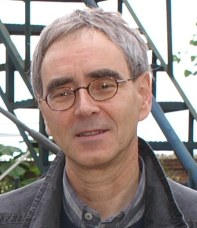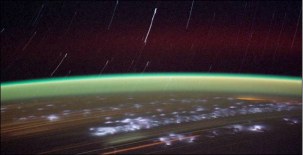
The earth airglow
The payload of the SwissCube satellite is a small telescope which takes images of the airglow. The airglow is a photoluminescence of the atmosphere occurring at approximately 100 km altitude (see figure on the right). It is principally due to photodissociation, photo-excitation and excitation by fast electrons or ion recombination. The origin of nightglow is oxygen atom recombination, where the oxygen atoms are created in the daytime by solar photodissociation of O2.
The scientific objectives are thus to observe oxygen emission in order to characterise the airglow intensity as a function of the observation angle (zenith or limb measurements), the altitude, the latitude and the local time. The minimum science duration is 3 months, with an extended science mission of duration up to 1 year. It consists of a PCB, including a detector and its control electronics, and an optical system which images the airglow with three standard lenses,a baffle system for attenuating the stray light of the sun and a bandpass filter which selects the desired wavelength of the oxygen emissions.
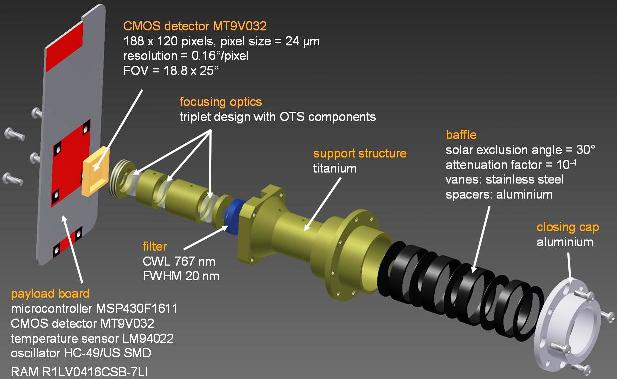
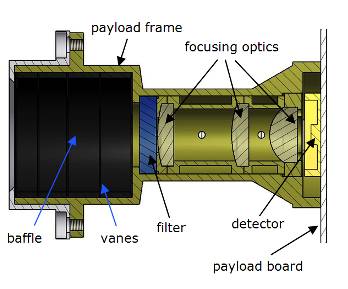
Instrument cross-section
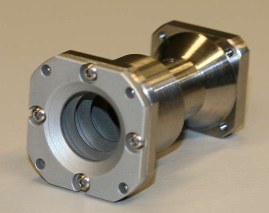
The flight item


